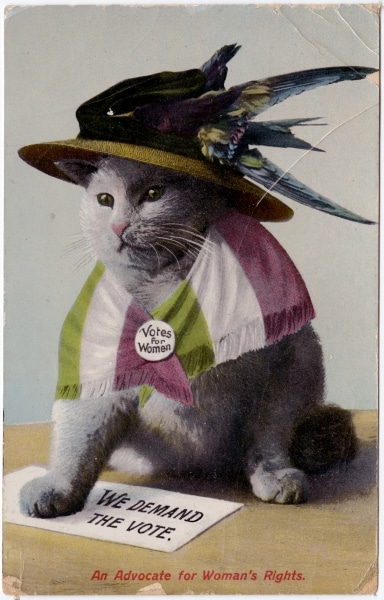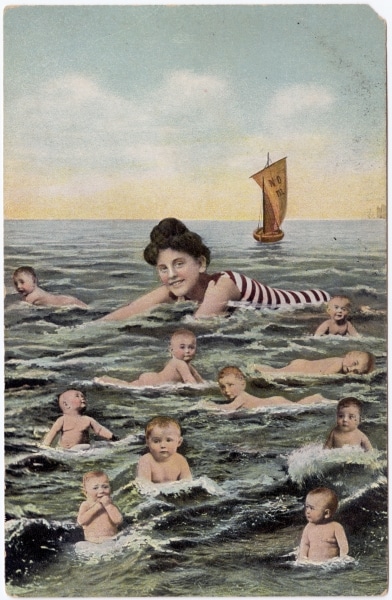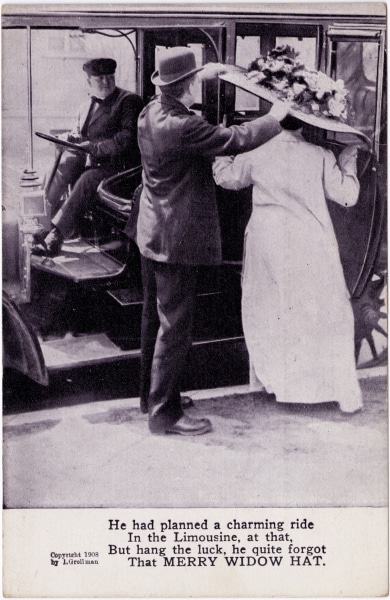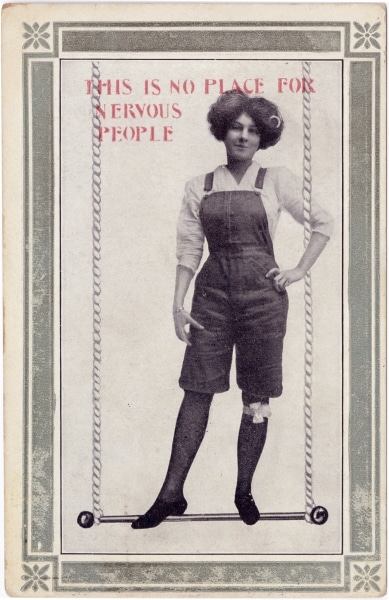Library Company Acquires the Kathryn S. Alpert Collection of Women’s History Postcards and Ephemera

An Advocate for Women’s Rights (London: A.& G. Taylor, ca. 1910). Orthochrome Series of Copyright Pictorial Postcards. Color photomechanical print.
This spring, the Library Company had the great fortune to acquire the Kathryn S. Alpert Collection of Women’s History Postcards and Ephemera. Bostonian Kathryn S. Alpert founded Alpert Communications, a PR and marketing agency in 1991, and PostMark Press, a publishing, design, and licensing business in 2001. She began collecting postcards as a child and later used them in support of her professional work. With the receipt of the Alpert collection, the Library adds 3,000 new pieces of ephemera, primarily postcards, but also trade cards, fans, labels, and photographs that fosters the study of women and visual culture before the mid-20th century.

Postcard depicting a woman swimming with babies (Portland, Me.: The Hugh C. Leighton Co., ca. 1910). Made in Germany. Color photomechanical print.
Dating between the 1870s and 1930s, the visually poignant ephemera consists of a multitude of thought-provoking imagery on topics that range from marriage and motherhood to women’s rights to fashion fads and reform. Frequently including captions and personal inscriptions, the graphics represent not only the visual and popular cultures of their eras but also the sociopolitics. In addition to quirky, original works of postcard art drawn by members of early 20th-century amateur art exchange clubs, the collection auspiciously adds the work of such premier postcard illustrators as Hamilton King, Harrison Fisher, Ellen Clapsaddle, and Pearl Fidler LaMunyan to our graphic arts holdings.

He had planned a charming ride … (Chicago: I. Grollman, 1908). Photomechanical print.
The Alpert Collection contains numerous telling graphics. One finds stereotypical and sentimental portraits of motherhood and less conventional ones, such as a series of circa 1910s photo-collage views depicting mischievous women swimming and fishing for babies. Conversely, the mocking depiction of a death-faced temperance proponent under the caption “Lips That Touch Liquor Shall Never Touch Mine” and the condescending likeness of a “suffrage cat” wearing a “votes for women” button represent the negative female clichés propagated during the long 19th century. Early 20th-century images reflecting women’s fashion prove no less compelling. Hyperbolized and outrageous portrayals of modish women wearing the wide-brimmed “Merry Widow” hat contrast with comical and subversive pictures of “new” women attired in pants at work or at leisure.

This is No Place for Nervous People (United States, ca. 1911). Photomechanical print.
This most engaging compilation of ephemera encompasses scenes displaying gender role reversals, including Leap Year marriage proposals. Whimsically conceived pictures depicting animal figures in human situations, such as a hen and rooster couple, “Dressed for Dinner,” can also be found. Also included are deceptively comical, yet disturbing to the modern eye imagery representing gender dynamics in the office, as well as graphics replete with innuendos evincing the gender, class, and race complexities of the early 1900s.
The Library Company continues to be a leader in acquiring, preserving, and providing access to American graphic arts and historical ephemera. A consequential acquisition, the Kathryn S. Alpert Collection of Women’s History Postcards and Ephemera sustains this important role for the Library. We look forward to highlighting the collection in our catalogs, publications, and programming in the years to come.
Erika Piola
Curator of Graphic Arts and Director, Visual Culture Program


